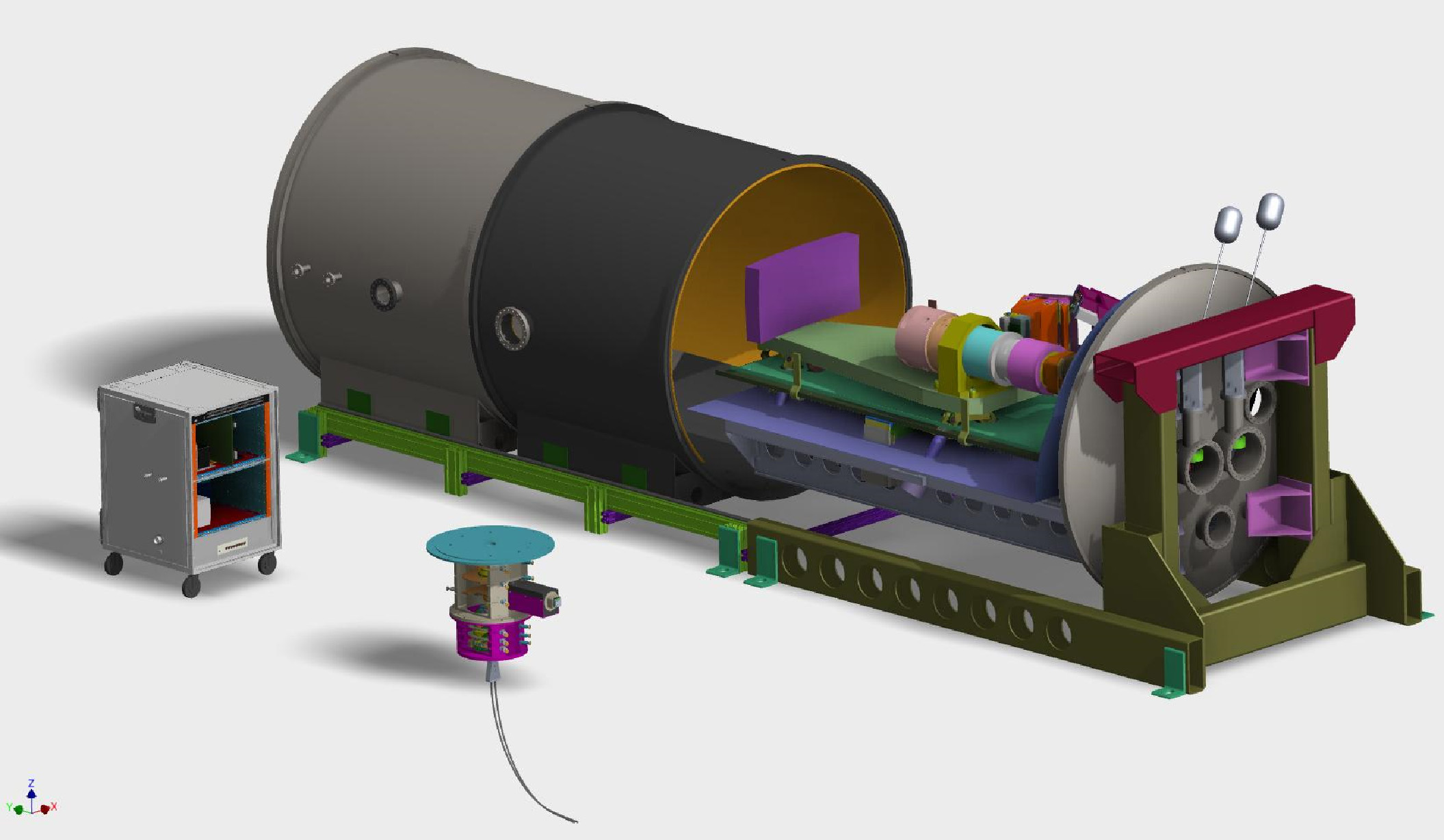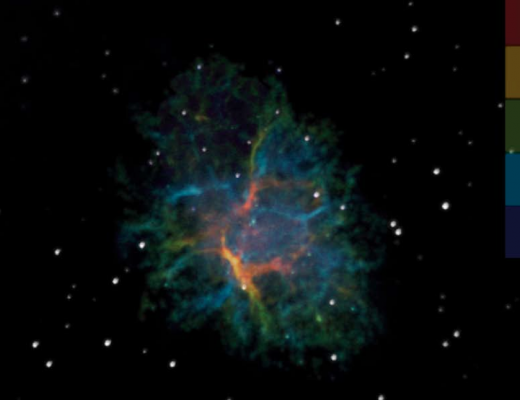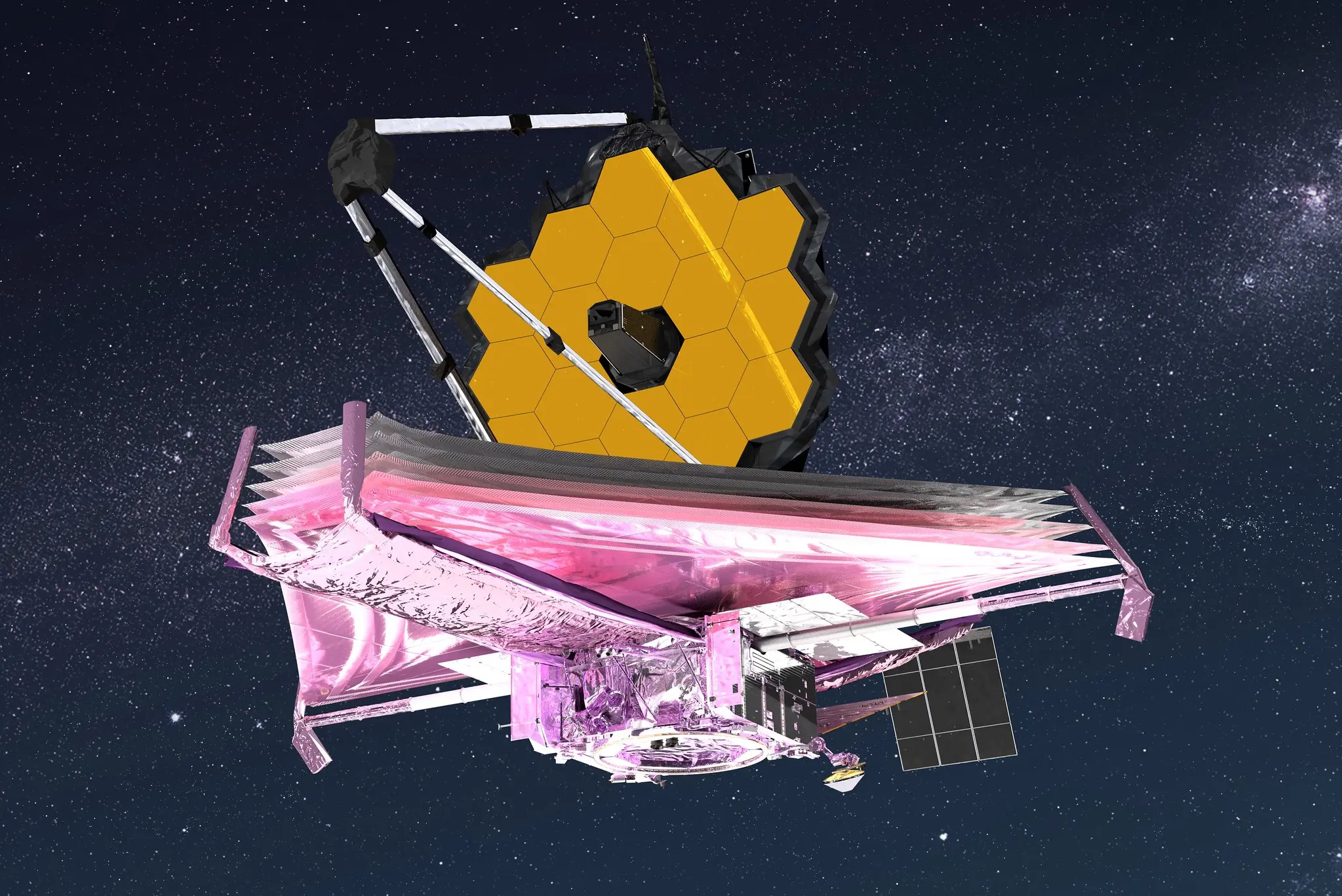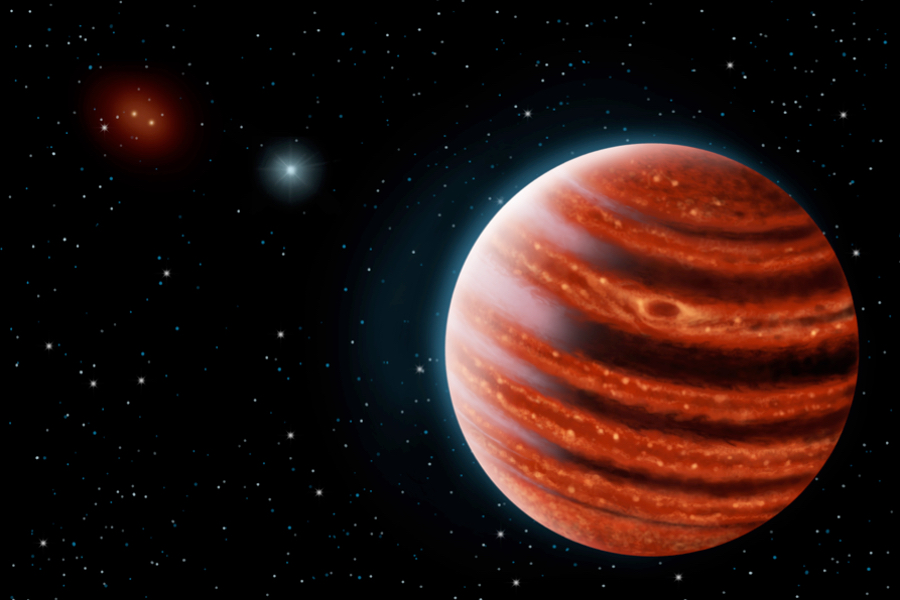SPIRou: a new Infrared SpectroPolarimeter

SPIRou is a new Infrared SpectroPolarimeter for discovering new habitable worlds and studying the birth of stars and planets.
The Canada-France-Hawaii Telescope (CFHT) has just confirmed its participation in the funding of SPIRou. SPIRou is an international project led by the Institut de Planétologie et d’Astrophysique de Grenoble (France) and the Université de Montréal, involving institutions in Canada, Switzerland, Brazil, Taiwan and Portugal, as well as CFHT. SPIRou is a high-precision spectropolarimeter and velocimeter optimized for the detection of habitable exoTerres around red dwarf stars, and for the study of the birth of stars and planets. Construction of SPIRou will begin in 2014, for integration in Toulouse in 2016 and a first light at CFHT in 2017.
Are we alone in the Universe?

Artistic illustration of the Gliese 581 exoplanetary system, orbiting a small red dwarf star. Credit: ESO.
How are stars and planets born? How does the magnetic field influence this genesis? Is our Earth, with its large amount of liquid water on its surface, unique or just another ordinary planet in the galaxy? These are just some of the major questions being asked by specialists and the general public alike, and to which SPIRou, a new-generation instrument for the CFHT, intends to provide original answers over the next decade.
“In addition to being a spectropolarimeter – i.e. an instrument capable of breaking down starlight into its elementary colors and vibratory modes – SPIRou is a high-precision velocimeter, capable of recording the tiniest movements of a star that indicate the presence of an orbiting planet – much like a roadside radar that flashes, not for excess speed of the star observed, but for regular and periodic variations in its speed”, explains René Doyon, Director of the Mont-Mégantic Observatory, Professor in the Physics Department of the Université de Montréal, member of the CRAQ and co-principal investigator of the SPIRou project.
SPIRou will search for Earth’s twins in the planetary systems of red dwarf stars close to our Sun. The atmospheres of these twin planets can then be scrutinized for water and other biomolecules associated with the presence of life, using the new Webb space telescope scheduled for launch in 2018. Professor René Doyon is also Principal Investigator of Webb’s FGS/NIRISS instrument team, whose main task is to study exoplanets and their atmospheres.
SPIRou: a major technological challenge
SPIRou has to operate in the infrared range to best observe the cold stars that are red dwarfs. This requires the heart of the instrument, the spectrometer, to be immersed in a cryostat cooled to the temperature of liquid nitrogen (-200°C) to prevent the ambient thermal radiation, omnipresent in the infrared, from eclipsing the very faint stellar light we wish to decipher. What’s more, in order to detect the nanometric movements of the spectra that will betray the presence of habitable Earths, the cryostat’s thermal stability must be exceptional, guaranteeing a constant temperature to an accuracy of a few thousandths of a degree. In addition to its scientific involvement in the project, the Université de Montréal, along with Université Laval, took on this technological challenge. The UdeM team is responsible for the SPIRou camera and infrared detector, while Université Laval contributed its expertise in optical design.
SPIRou will be installed at the CFHT, a sentinel of the skies at the summit of Maunakea, a 4,200-metre volcano on the Big Island of Hawaii. The CFHT is a 3.6-metre telescope featuring several state-of-the-art instruments. Although located in one of the world’s best astronomical sites, the CFHT is not immune to the competition and must constantly innovate, through an ambitious scientific policy, to maintain its leading position in a world of giant telescopes. SPIRou is one of the key instruments that should guarantee the telescope’s future over the next decade. The CFHT has just ratified its financial participation in SPIRou, thus starting the construction budget, in which a large international consortium of universities and research laboratories is participating.
A partnership with the cartoon magazine SPIROU is in place to ensure that the discoveries are disseminated to a young audience.


